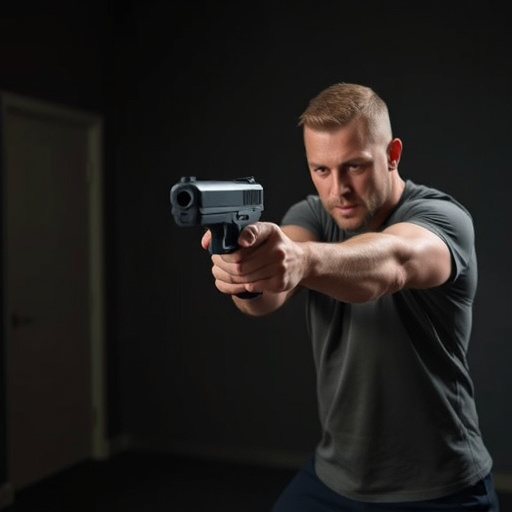Choosing the best stun gun for home defense involves understanding the variability of paralysis duration, model differences, and legal implications. Key considerations include power output, portability, ease of use, reliability, and brand reputation. While stun guns typically immobilize targets for 2-5 seconds (varied by factors like target's physicals and environmental conditions), they remain a popular choice for non-lethal self-defense. Thorough research into local laws and device features ensures users stay within legal boundaries and select the most effective tool for their safety needs, emphasizing the importance of a best stun gun tailored to individual circumstances.
“Paralyzing situations often arise in security and law enforcement, with Taser deployments becoming a common tool. Yet, understanding the duration of paralysis following deployment is crucial. This article delves into the complexities of paralysis duration after Taser use, exploring factors like subject physiology and deployment techniques.
We’ll navigate legal considerations essential for responsible stun gun ownership, particularly when defending your home. Discover expert insights on choosing the best stun gun, real-world scenarios, and case studies that highlight the impact of Taser deployment, offering valuable knowledge for those seeking effective personal protection.”
- Understanding Taser Deployment and Its Effects
- Factors Influencing Paralysis Duration
- Legal Considerations: What You Need to Know
- Choosing the Right Stun Gun for Home Defense
- Real-World Scenarios and Case Studies
Understanding Taser Deployment and Its Effects
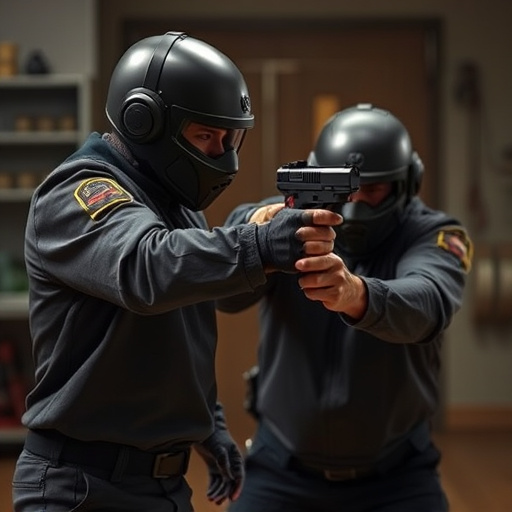
Tasers, also known as electroshock weapons, are designed to immobilize individuals through the delivery of a strong electric current. When deployed, these devices fire small probes connected to wires that administer a high-voltage, low-current electrical pulse. This shock can cause muscular paralysis, disorientation, and temporary incapacitation, making Tasers popular for law enforcement and self-defense purposes.
While often considered less lethal than firearms, the effects of Taser deployment can vary widely based on factors like the model used, the distance between the device and the target, and individual differences in muscle mass and physical condition. Choosing the best stun gun for home defense involves understanding these variables. For instance, newer models offer more precise charges and quicker recovery times, which are crucial for minimizing duration of paralysis and ensuring the safety of both users and potential targets.
Factors Influencing Paralysis Duration
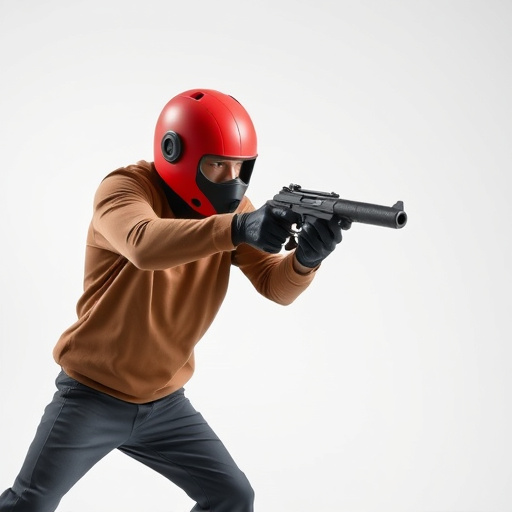
The duration of paralysis caused by a taser deployment can vary significantly and is influenced by several factors. One of the key considerations is the model and power output of the stun gun used. More advanced and powerful devices are designed to deliver a stronger electric shock, potentially extending the immobilization period. For instance, when comparing the best stun guns for home defense, those with higher voltage ratings often claim longer-lasting effects.
Additionally, the target’s physical attributes play a role. Factors like body mass, muscle density, and overall fitness can impact how quickly an individual recovers from the shock. Larger individuals may experience brief paralysis due to their higher electrical resistance compared to smaller, more slender people. Environmental conditions, such as temperature and humidity, might also indirectly affect paralysis duration, as these factors can influence the electrical conductivity of the skin.
Legal Considerations: What You Need to Know
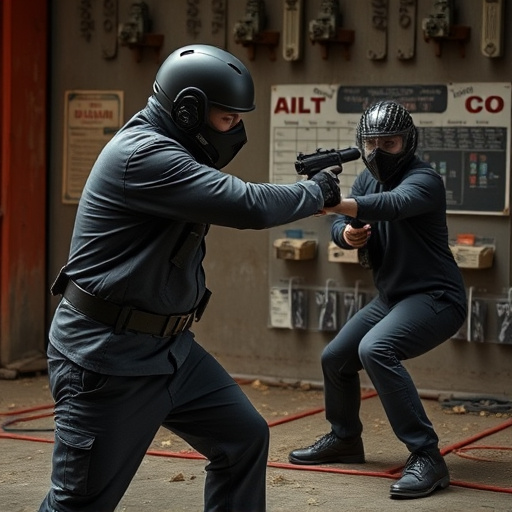
When considering a best stun gun for home defense, it’s crucial to understand the legal implications surrounding its use, particularly regarding paralysis duration from taser deployment. Each jurisdiction has its own set of laws and regulations that dictate when and how a stun device can be employed legally. Violating these rules can lead to severe penalties, including fines and imprisonment.
Before purchasing or using a stun gun, it’s essential to research your local legislation. Some areas have strict restrictions on who can carry and use such devices, while others may allow their use only for self-defense purposes. Understanding the legal framework ensures you stay within the boundaries of the law, protecting yourself from potential legal repercussions.
Choosing the Right Stun Gun for Home Defense
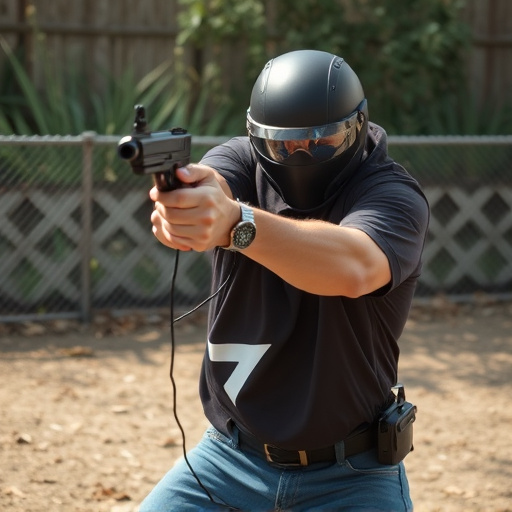
When considering a stun gun for home defense, choosing the right device is paramount to ensure your safety and peace of mind. The best stun gun for home defense should balance power with portability, ease of use, and reliability. Look for devices with high joule ratings—typically 12,000 to 15,000—to neutralize attackers effectively while remaining legal in your area.
Size and weight are also critical factors. A compact, lightweight stun gun is easier to hide and carry around the house. Additionally, features like a bright LED light or an alarm can enhance its effectiveness as a deterrent. Always opt for a brand with a proven track record for quality and customer satisfaction, ensuring you have a reliable tool in your defense arsenal.
Real-World Scenarios and Case Studies

In real-world scenarios, understanding the duration of paralysis after a Taser deployment is crucial for self-defense and public safety. Case studies have shown that stun guns, often considered the best home defense weapons due to their non-lethal nature, can immobilize targets effectively. The average paralytic effect typically lasts between 2-5 seconds, providing users with enough time to escape or call for help.
However, variables such as the model of Taser, body mass index (BMI) and physical fitness of the target, and environmental conditions can influence the duration of paralysis. For instance, individuals with higher muscle mass may experience shorter durations, while those in extreme stress or with certain medical conditions might show prolonged effects. Understanding these factors is essential for users to make informed decisions when selecting a best stun gun for home defense, ensuring its effectiveness in various real-life situations.
When considering the best stun gun for home defense, understanding the potential effects of taser deployment and the factors influencing paralysis duration is crucial. This article has explored these aspects, highlighting the importance of legal awareness and suitable weapon selection. By delving into real-world scenarios, we’ve emphasized the need for informed choices to ensure safety and effectiveness in defensive situations. Remember that the right stun gun can be a game-changer, but proper training and knowledge are equally vital to navigate the complexities of self-defense.
